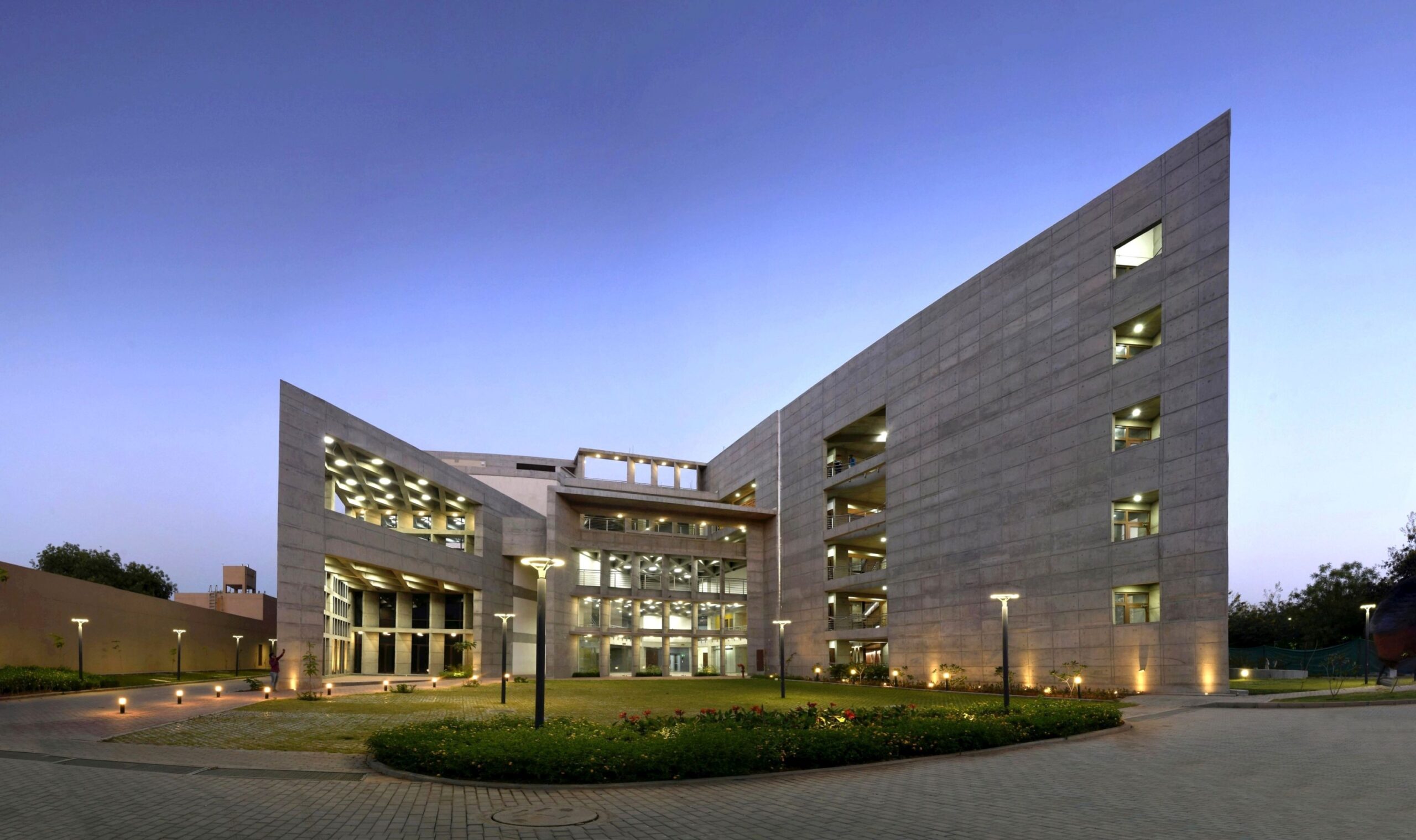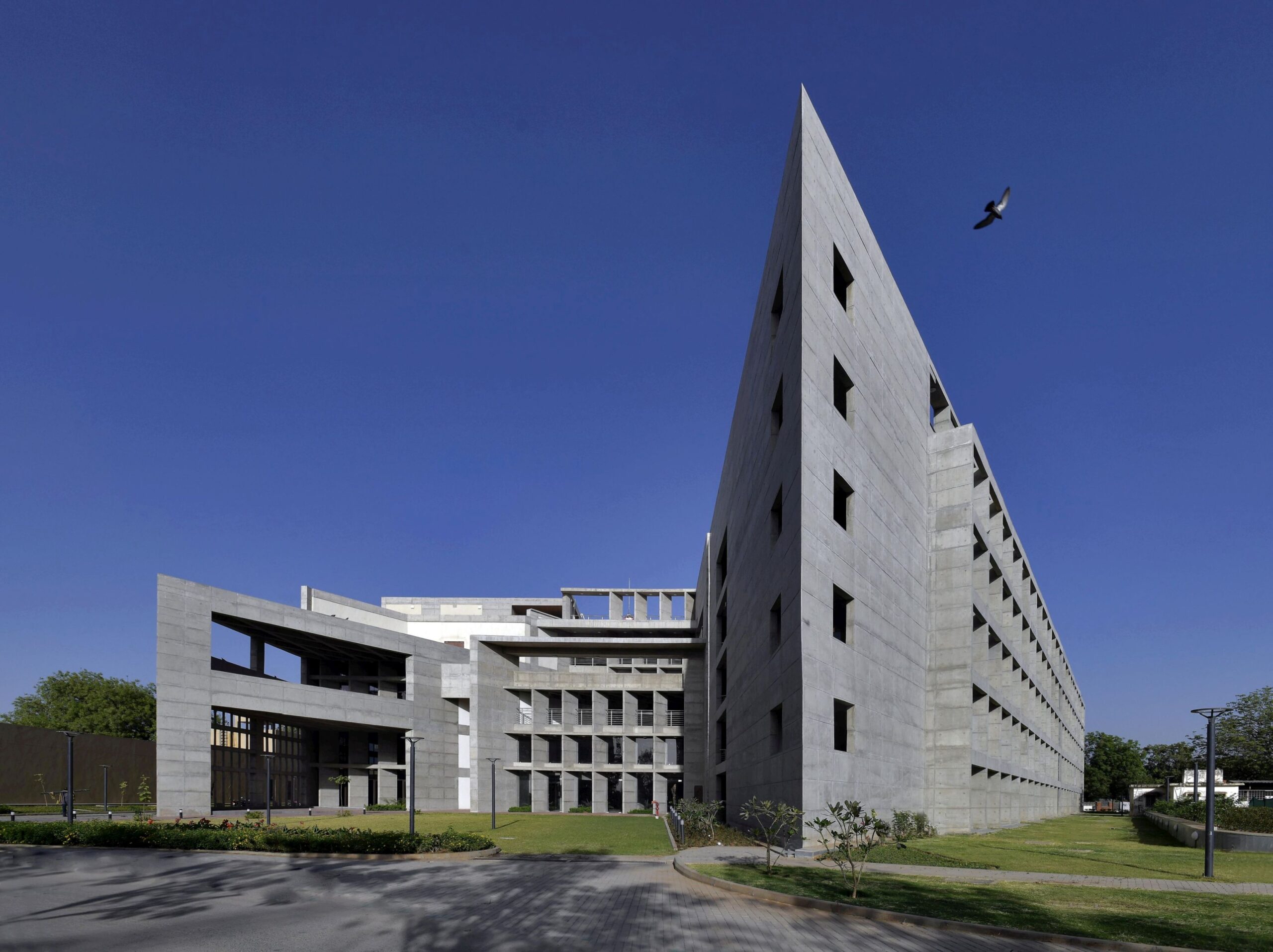
The IIT Gandhinagar Guest House is designed by Neeraj Manchanda Architects (NMA), with an approach that gets away from the anonymous ‘transnational’ space to make an experiential connection with location: its landscape, climate and flora. We spoke with the firm’s founder, Neeraj Manchanda, to understand the idea and the process, from concept to execution, that went into creating a physical environment for some of the brightest minds.
The firm won the commission through a two-stage competition conducted by IIT Gandhinagar, which saw about 40 entries shortlisted in the first stage and six in the second. The design brief called for a physical environment for people visiting the campus from across the country and the globe and staying in it temporarily. Beyond this essential requirement, the institution had put forward a free brief and was open to all ideas.
Our office believes in continuous collaboration with the client. In this case, IIT Gandhinagar and our office were in resonance- we jointly worked on the design brief development. We co-created the brief.
Neeraj Manchanda
The architects have broken down the transnational space model of doubly-loaded corridors by splitting it, thereby, immediate contact with location and nature. Finalised after several iterations, the Guesthouse’s design is inspired on the one hand by the vertical scale of the Pols of Ahmedabad and on the other by a Corbusierian vocabulary, for example, as observed in the city’s Mill-Owners building. The firm created a three-dimensional landscape around four primary notions set in concrete since the concept stage.
1. Microclimate
A Microclimate was created by splitting the corridors and inserting a thin garden inspired by Ahmedabad’s indigenous concept of mutual shading, as observed in the Pols. A tempered landscape environment, built on the architectural configuration of the building, became the starting point for the entire discussion and led to the conception of an undercroft, the second foundational element of the design. Landscape vegetation and greenery pervade the building and its undercroft with the help of a horizontal garden defined by a combination of pre-cast paver panels, gravel and turf. This is amplified three-dimensionally with the verticality of trees and hanging curtain creepers–forming the vertical garden. While the vertical axis, with regionally native species, connects the people staying in the guest house with their location, the undercroft forms the horizontal axis, providing opportunities for interaction.
2. Undecroft
IITs are known to provide an environment to foster revolutionary ideas. Envisioned as a space contributing to these ideas’ development by promoting interaction and conversations, the ground level is a free space in the form of an undercroft.


Chance interaction leads to conversation. Conversation can lead to ideation which in turn can lead to breakthroughs. In any institution, especially an IIT, conversations carry good ideas forward. So, we created a natural space where people could interact on the ground plane.
Neeraj Manchanda
For the architects, the aim was to create an unobstructed space that stays at a constant level from one end of the site to the other. The undercroft design is a continuum of space with hard and soft surfaces, shadow and light, and places to pause and meet.
3. Sustainable Design Strategies
The design adopts passive solar design strategies, contributing to better thermal comfort. The building’s orientation and the use of shading devices make the building less energy-intensive with respect to cooling loads. RCC fins and a fenestration that draws detail from the movement and angles of the sun run everywhere, including on the south-southwest face of the building, where the largest set of rooms is.

One central theme found in all IIT projects is working with robust solutions. There is no viewing gallery of sustainability techniques. It is fully integrated- passive cooling techniques, creating shade in a particular way, dissipating heat in a specific way, roof insulation, bringing down the adverse impact of solar insulation in the courtyard by providing a dense trellis: all together comprise an integrative, pre-emptive passive response.
Neeraj Manchanda
4. Geometry
Built using SCC- Self-compacting concrete, the material and geometry are two distinguishing features of the structure. Every material forms a part of a long-lasting, robust solution, representing the idea of the structure being architecture and architecture being structure.
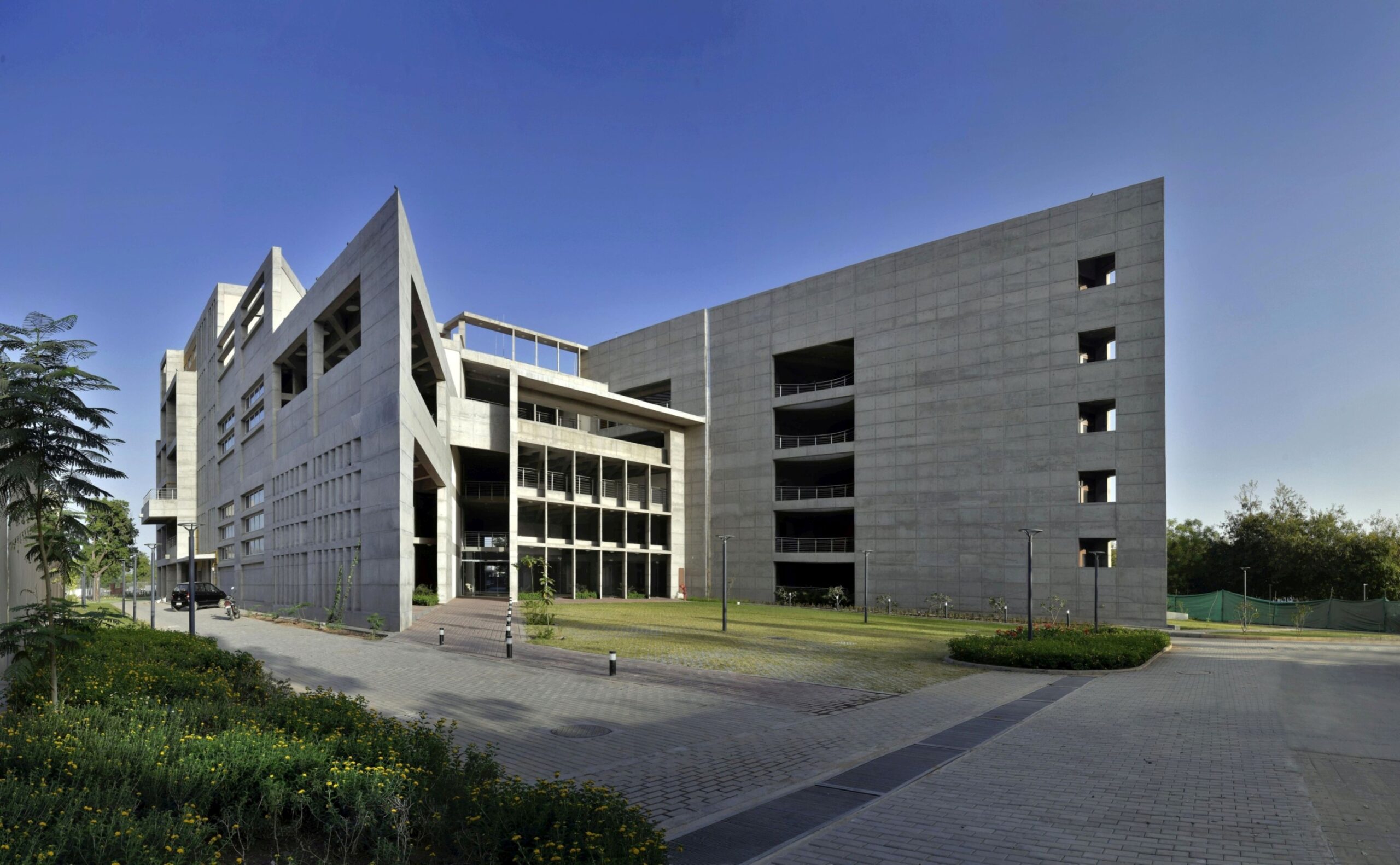
The structure has two pointing noses forming a geometrical intersection reconciling the north edge of the site with the south, naturally opening out to a garden. This intersection of the two angles carries everything into the front noses of the building. The beams, the middle space, and the reception areas arise from these angles.
The classical Indian modernist vocabulary, interpreted for an institution to ensure longevity, is observed in the materiality- the corridors have granite coupled with bricks- offsetting their impersonal nature and humanising the scale, the undercroft’s walking path uses brick, and the front yard is devoid of any redundant details.
The structure, which saw the execution of 85 out of the 125 rooms in the first phase, was also used as a Covid Care Centre during the second wave. Passive design strategies, large windows, open corridors and microclimate ensured that the patients under Covid Care were not completely isolated from the natural environment. Open corridors, conceived for an energy-efficient and location-sensitive building, significantly reduced the risk of the airborne virus spreading.
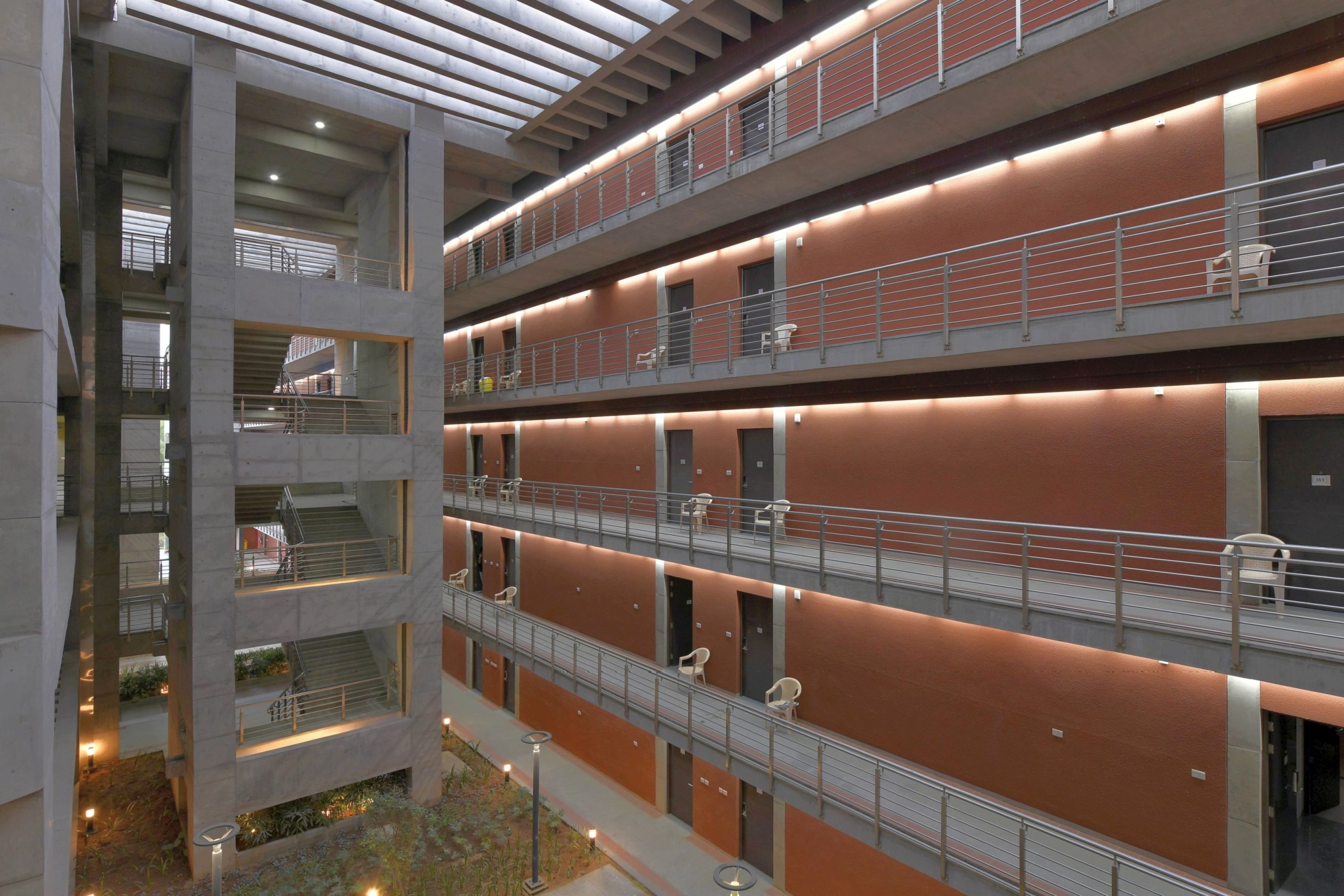
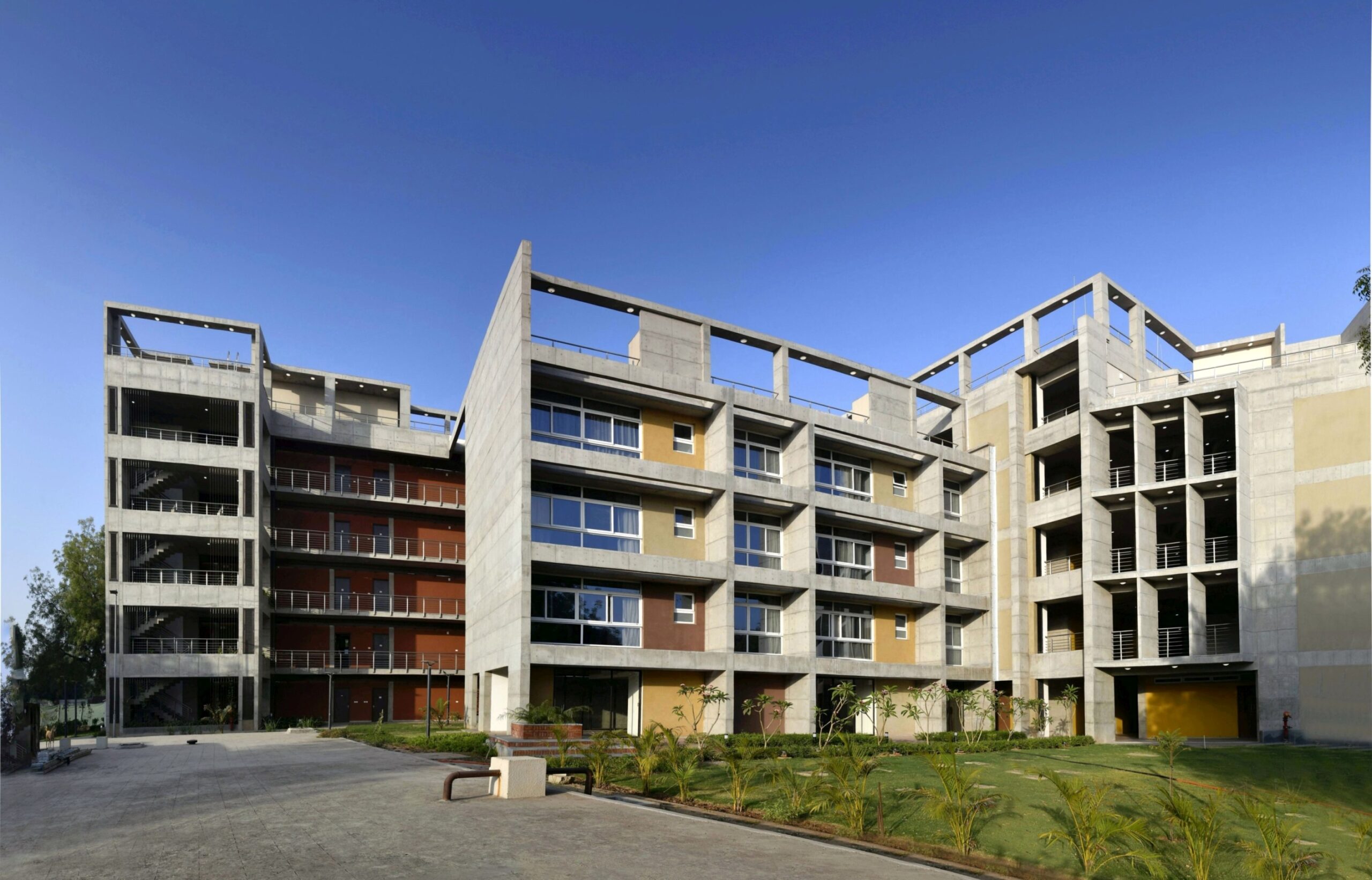
For Neeraj, this experience brought about a shift in ideology- from talking about the 3Es- Ecology, Environment. and Energy to adopting the 3Hs- Human, Health and Happiness.
These Hs not just substitute the three Es but also include other aspects. I am not talking about just tangible, number-oriented stats, but a much larger thing now.
Neeraj Manchanda
For users of the IIT Gandhinagar guest house, the robust and passive response provides good daylighting, thermal control and a microclimate that, together, comprise a good experiential feel. Shade makes the generous semi-indoor outdoor spaces feasible in Gandhinagar.
The integration in the project of the traditional elements of Gujarati art and craft with non-repeated end-to-end horizontal murals in every room completes the experiential connection to the location for users.
Today, the project has been in use for about a year, and the architects now look forward to hearing from users. Post-occupancy feedback from IIT Gandhinagar validates that the project brief has been delivered and that the outcome corresponds to the objectives set at the outset.
Architects can tend to pronounce verdict on completed projects in isolation of any project’s core- constituency: its users. Here, in this case, in the words of the IIT team responding to the project after its completion, ‘everything discussed at the outset was addressed’. The project has elicited a positive response from the extended IIT Gandhinagar community. That, to me personally, means a lot.
Neeraj Manchanda
Drawings
Plans
Sections and Elevations
Images
IIT Gandhinagar Guest house facts
Comprehensive Architectural Consultancy: Neeraj Manchanda Architects
Partner in charge: Neeraj Manchanda
Project Architects: Zia Jehanzeb, Tanvi Verma, Chirag Batra, Siddhartha Babbar, Sharmishtha Agarwal, Rahul Singh Ranjan
Photographer: Amit Pasricha and Neeraj Manchanda Architects
Landscape Design: M/S Eco-Design
Structural Engineering: M/S TPC Technical Projects Consultants Pvt. Ltd.
MEPF: M/S dbHMS, M/S Jhaveri Associates
GRIHA Certification: M/S Kalpakrit
Survey: M/S ABM Engg & Surveyors
Covered Area: 9850 sq.m
About the Firm and its Founder
Neeraj Manchanda Architects was established in January 1990. Its founder, Ar Neeraj Manchanda, had previously worked with Architect Joseph Allen Stein and later led the shelter group of the Development Alternatives. During his association with the latter, he designed its headquarters using raw earth, the first of its kind in Asia. His involvement with development initiatives and collaboration with village communities led to him identifying himself as an architect with a development goal, eventually shaping the ideology of Neeraj Manchanda Architects.
It has always been about trying to make a positive change for the people we design for, always about location centricity; in our body of work, you would find no consistent pattern. It is always in response to the location.
Neeraj Manchanda
The firm rejects notions and values that tie them to a stylistic expression. Instead, their design ethos revolves around being location-centric and enriching the user’s life in a manner the design could afford.

